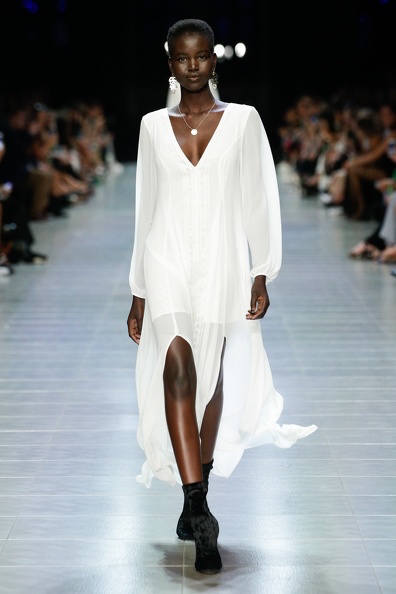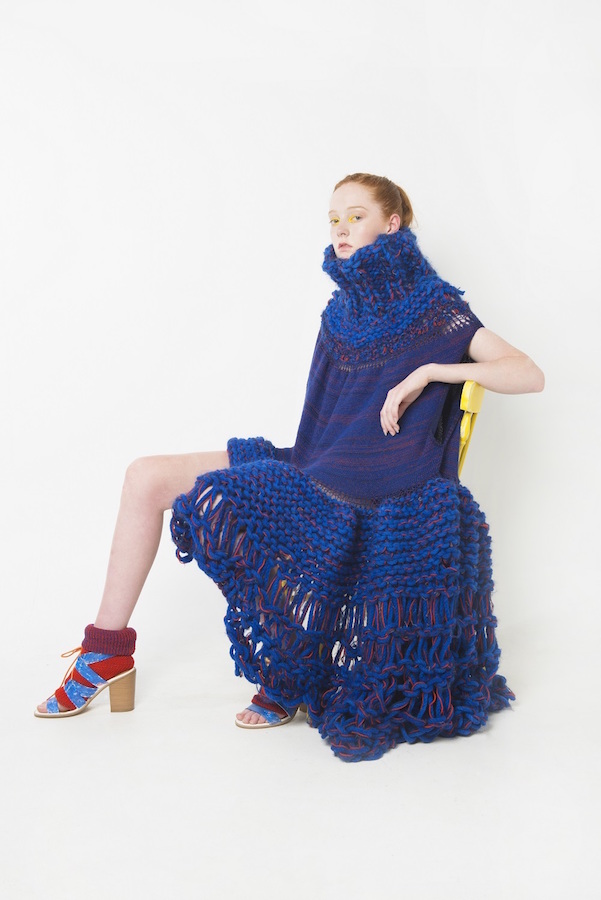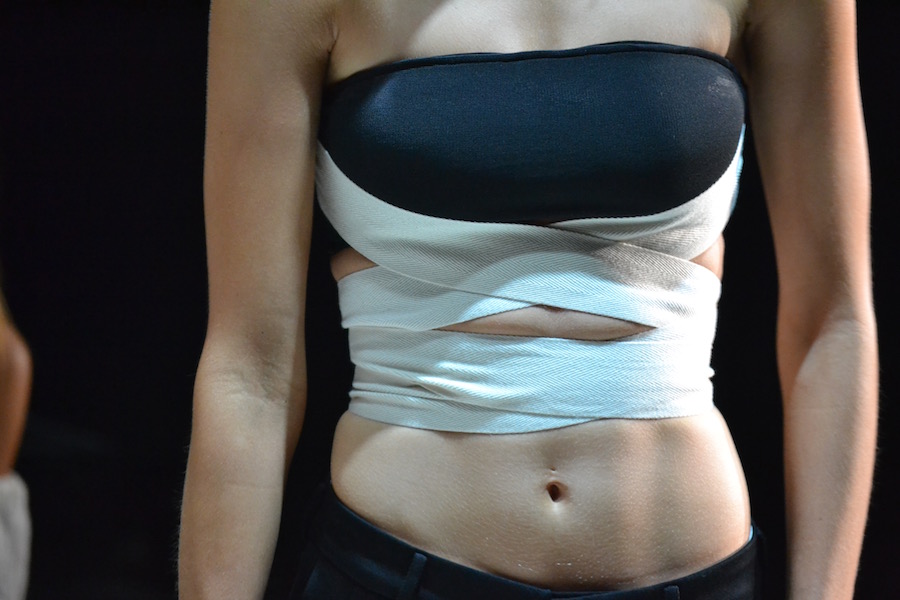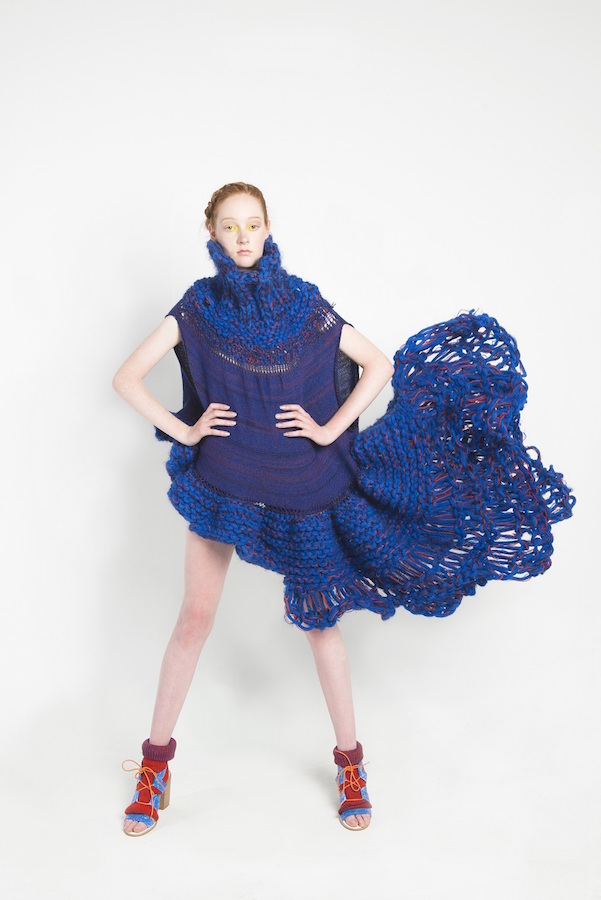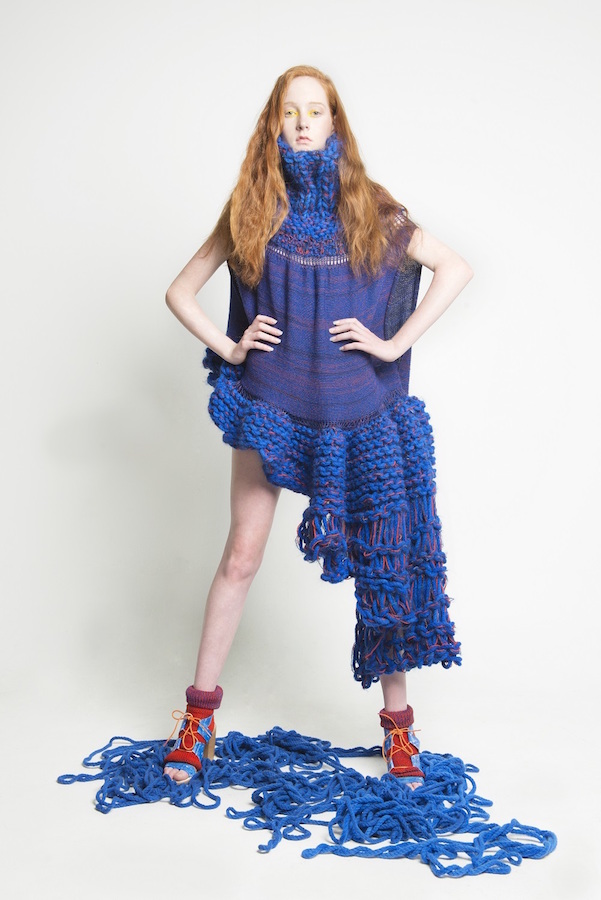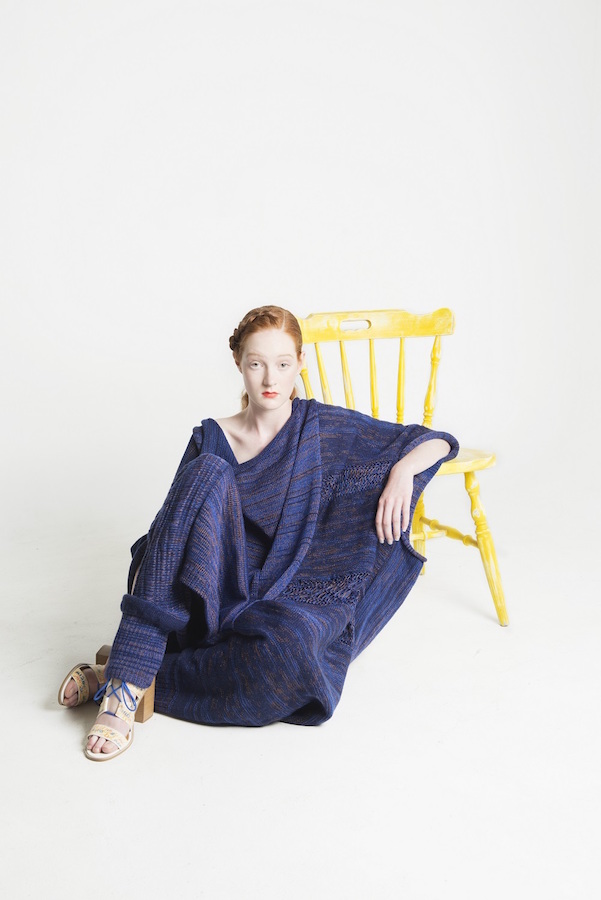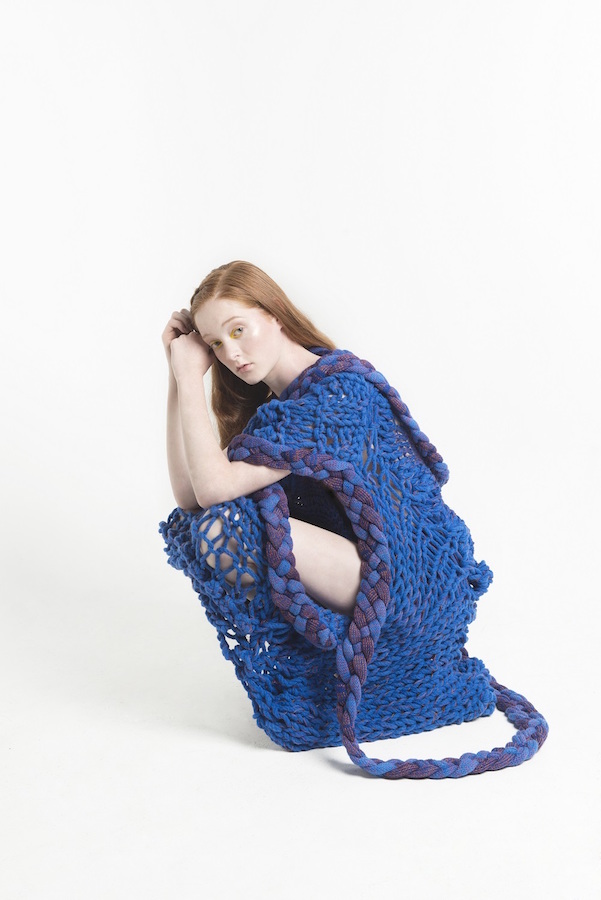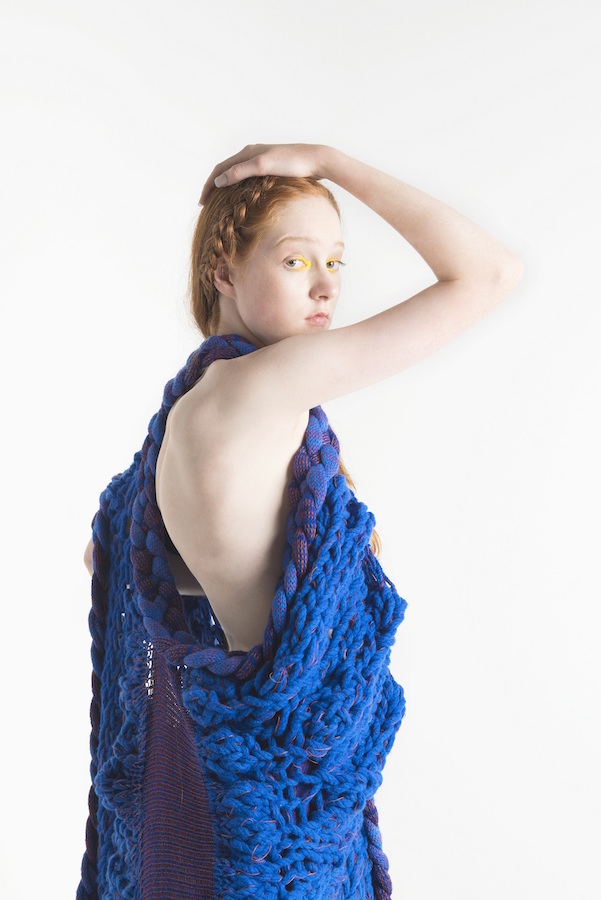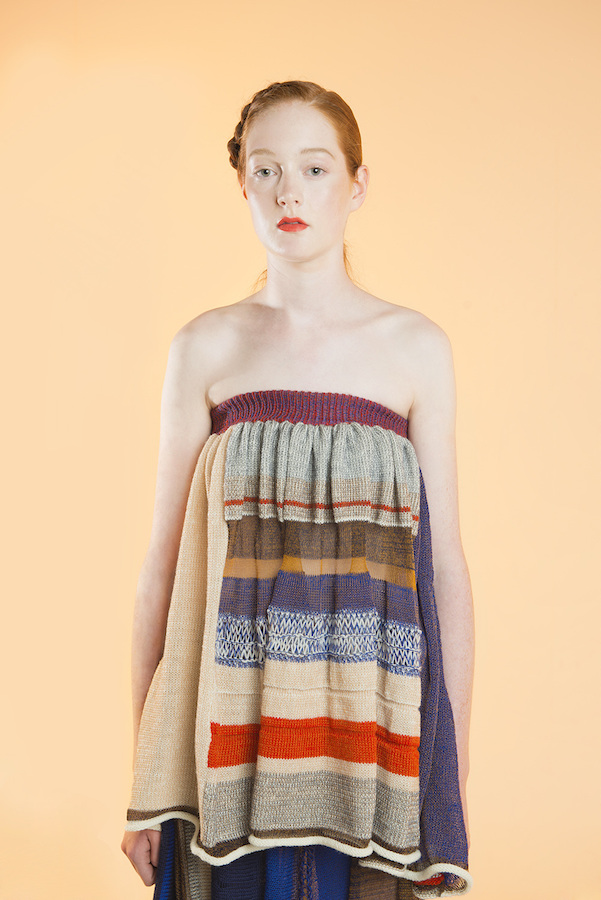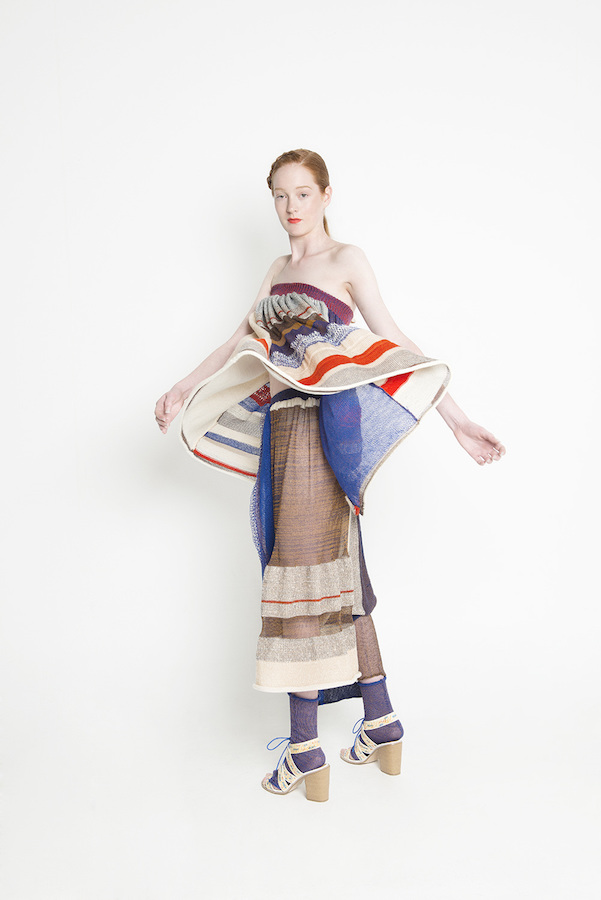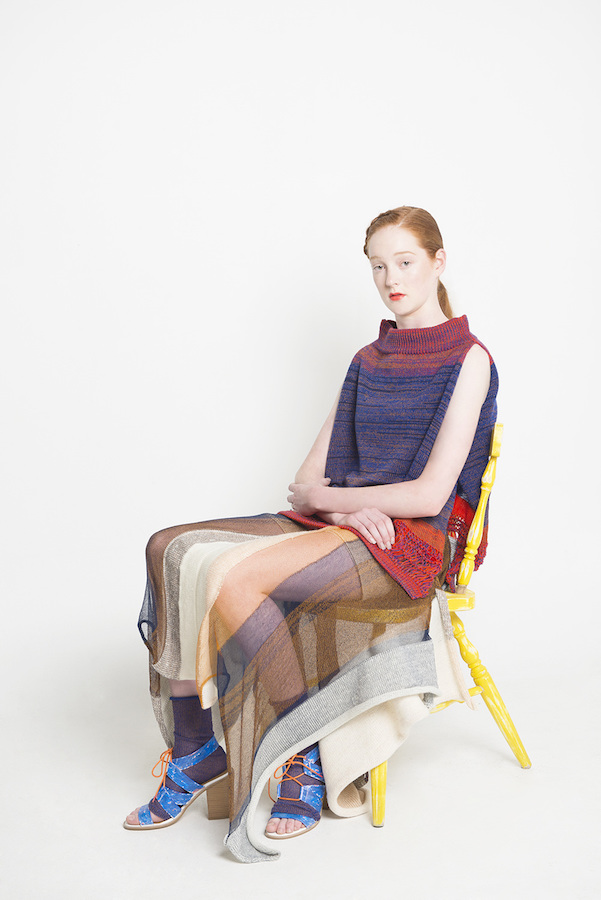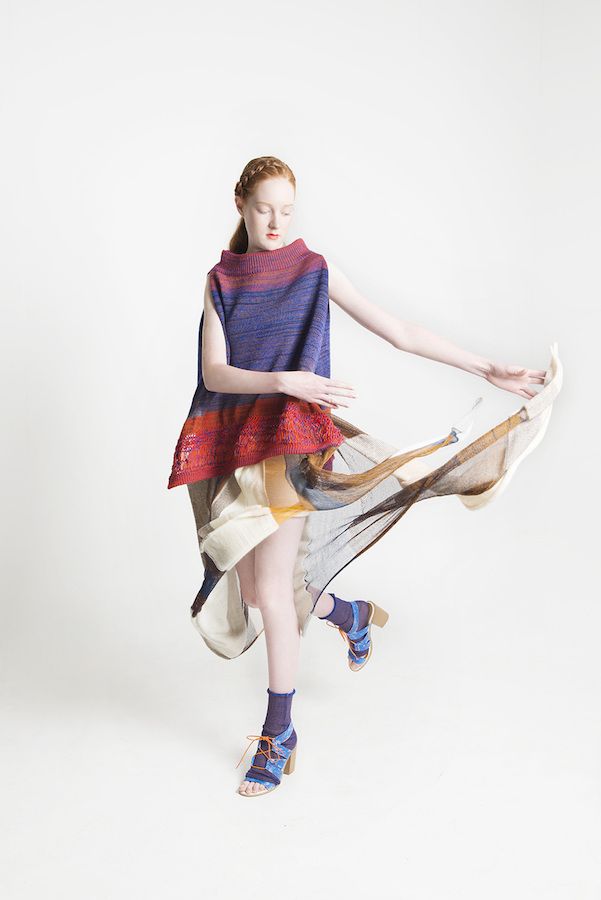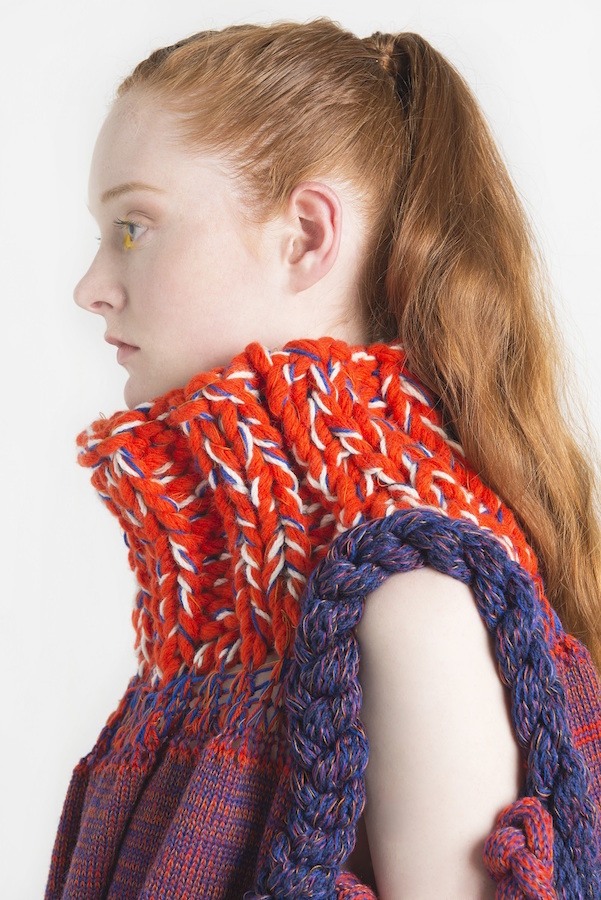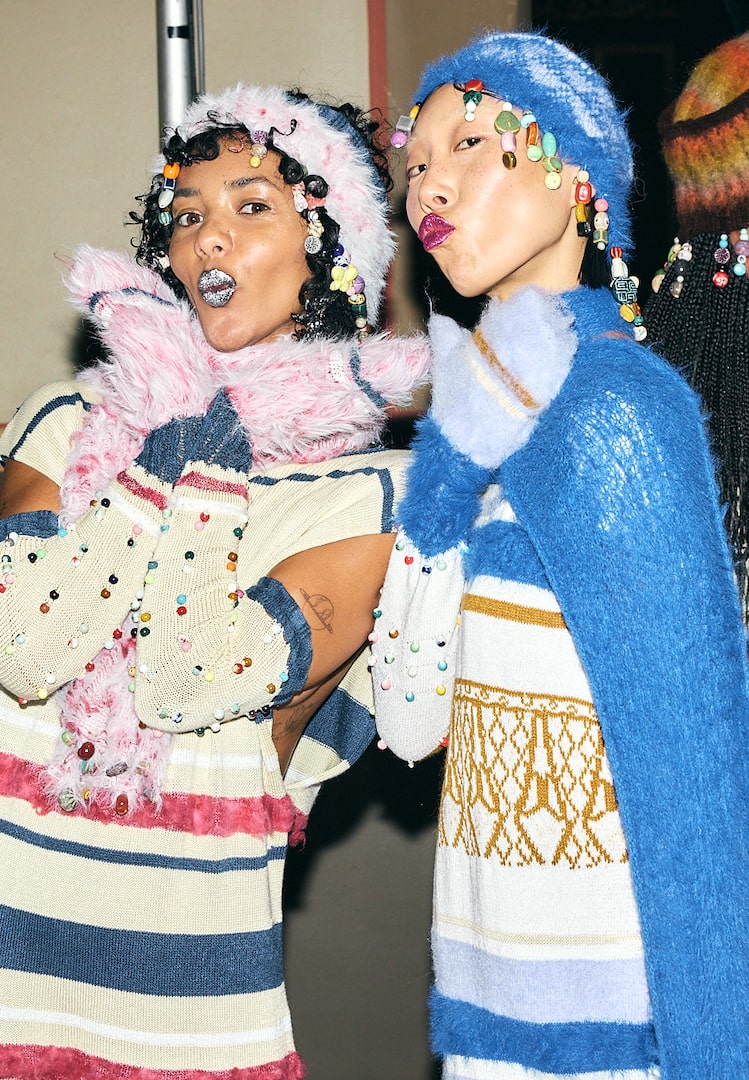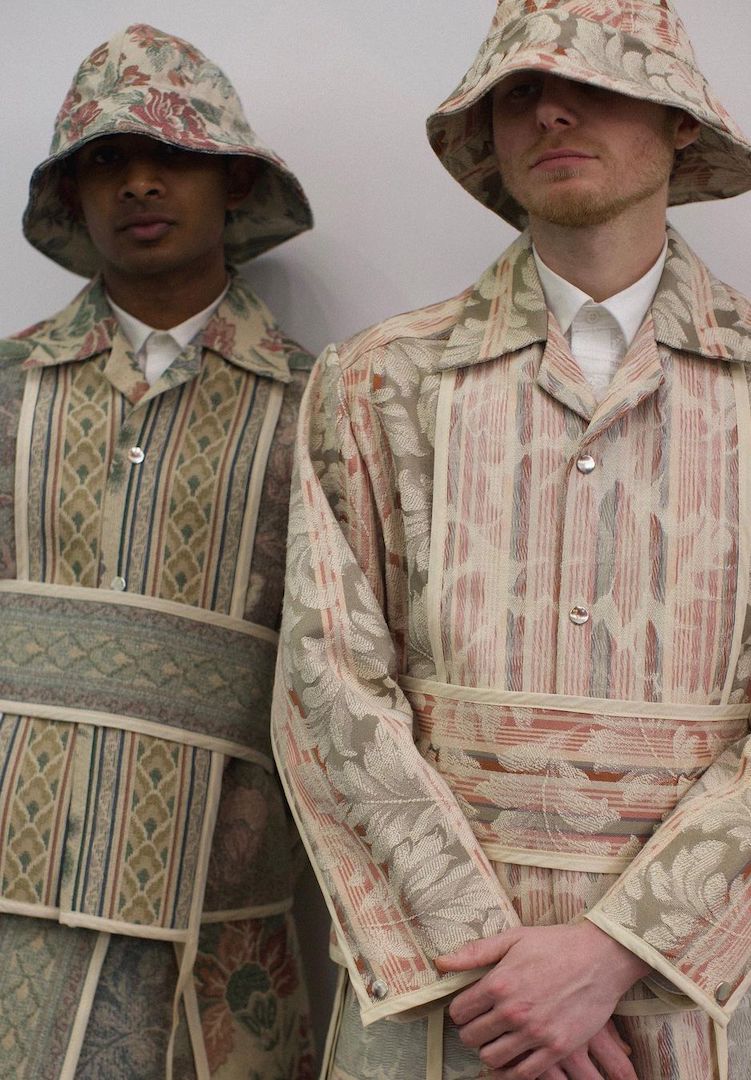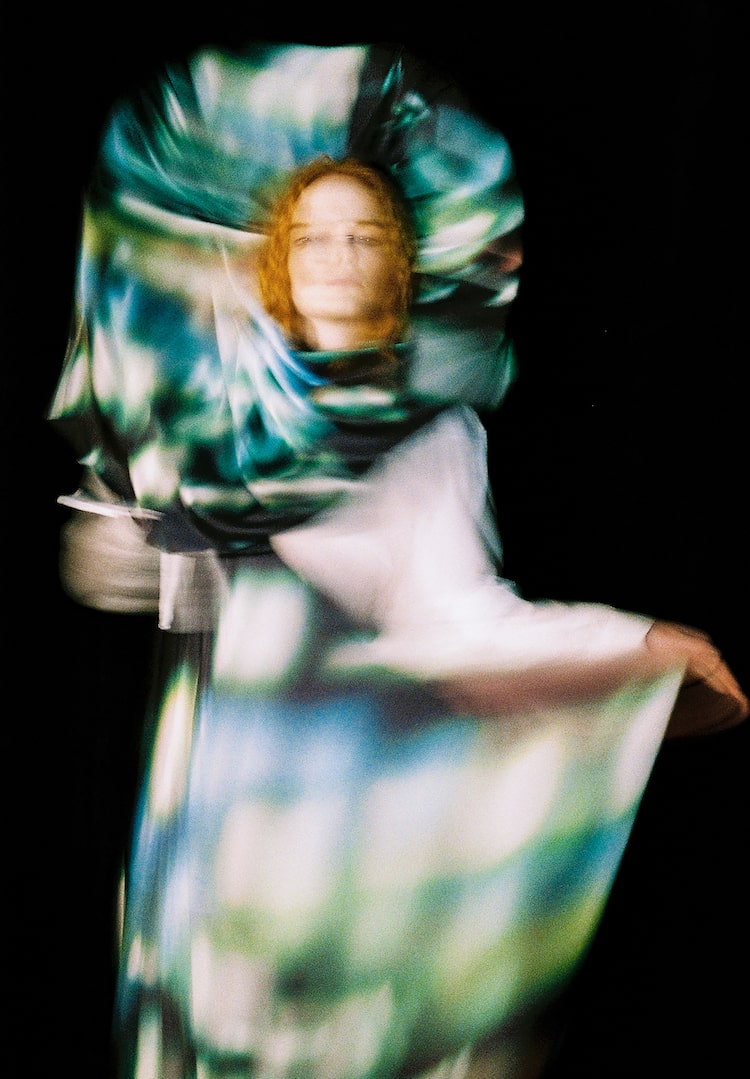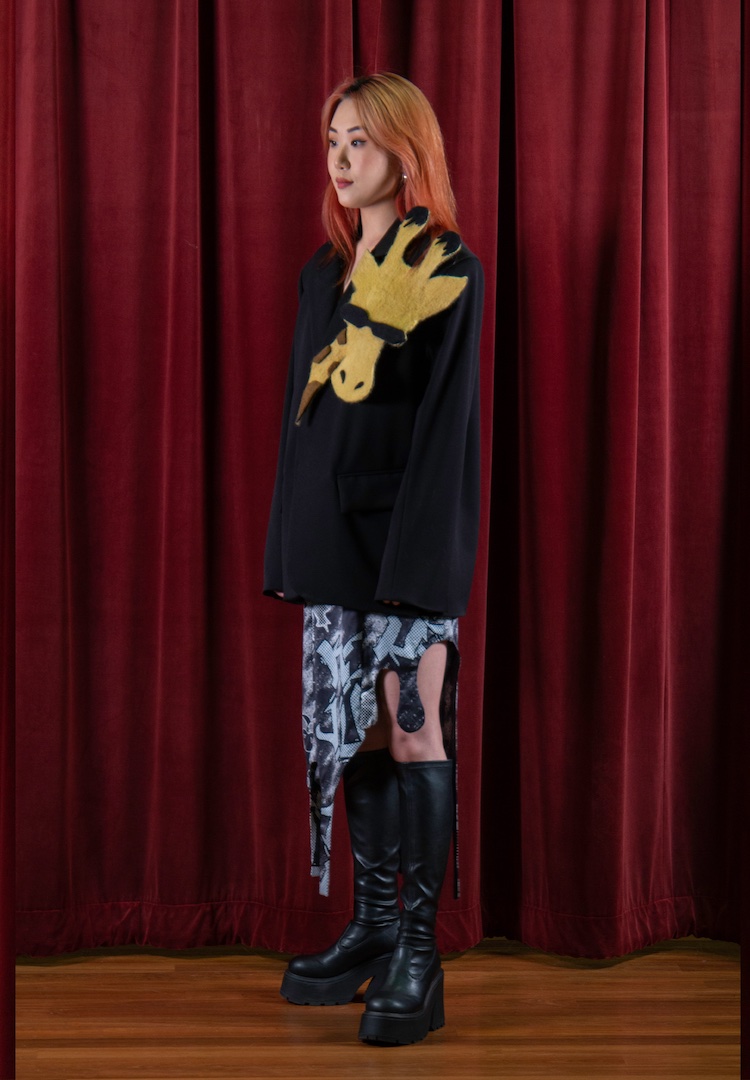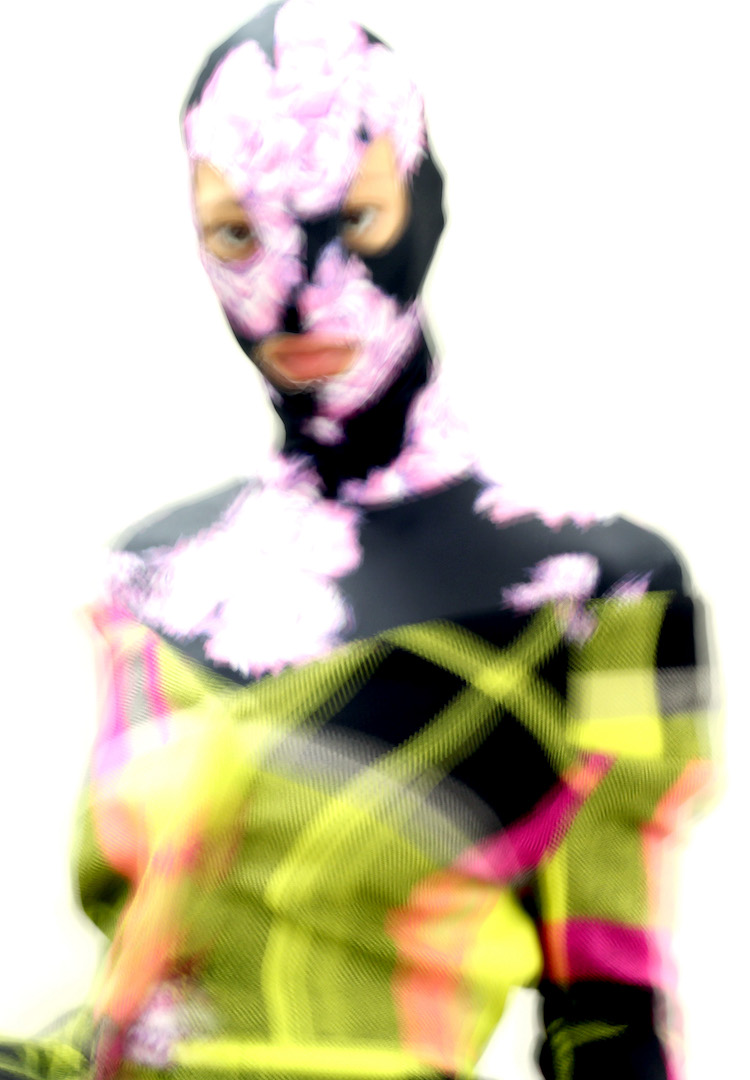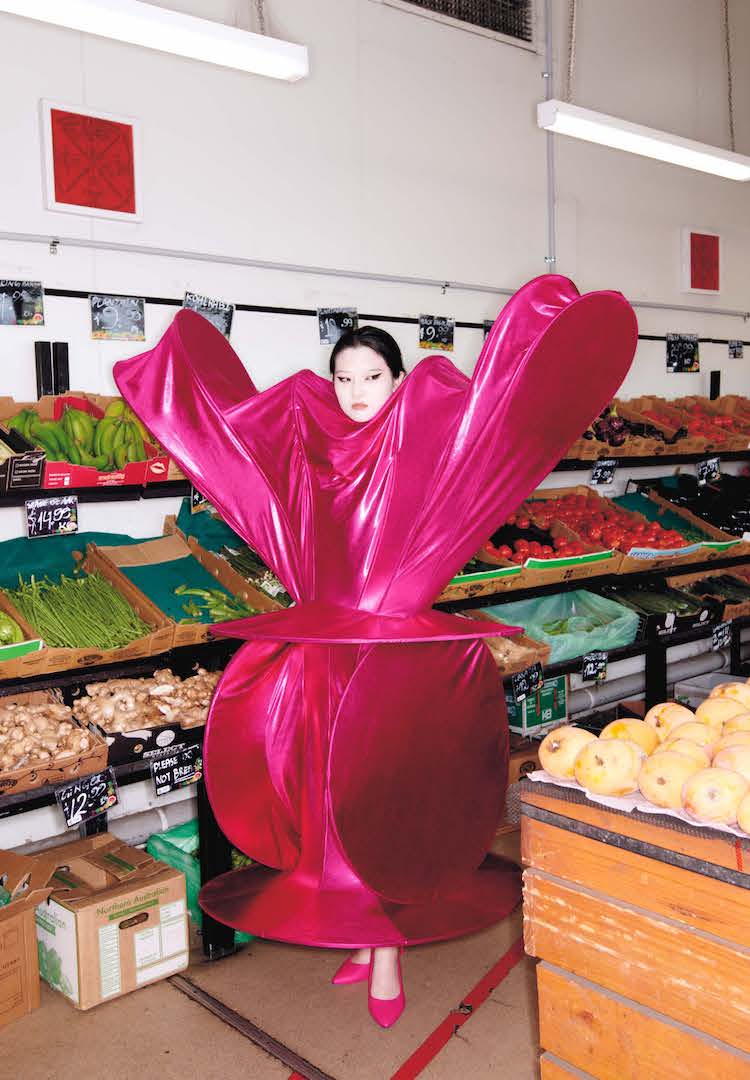Next gen designers: Tony Lee
The names you need to know.
The Virgin Australia Melbourne Fashion Festival is underway and this year’s lineup of graduate designers looks very promising.
These designers are the crème de la crème of the country’s top tertiary institutions, all brought together as part of the National Graduate Showcase.
Presented by AMP Capital and supported by Fashion Journal, the National Graduate Showcase will take place at the Royal Exhibition Building on March 19. You can pick up a ticket here.
Ahead of Sunday’s showcase, we thought you’d like to get to know the designers for yourself. Meet Tony Lee from University of Technology Sydney.
Tell us a little bit about your collection.
The Looping questions the conventional way knitwear is made. During the research process, I discovered that machine knitting and hand knitting are very different, and I challenged myself to break the incompatible boundary between the machine-made and handcrafted textile. The keyword in my work is ‘blend’. I blend [the two techniques] in one process which means there are no joins or seams between fine machine knitting and voluminous hand knitting; it’s a single, continuous, inter-looping structure.
Did you have a specific wearer in mind when designing this collection?
To be honest, I didn’t have a specific muse or wearer in mind, but I always pictured my designs on someone who is creative, enthusiastic about what she does and definitely is not scared of wearing bold colours!
What drew you to knitwear?
I think in the past, most people had this idea of knitting/knitwear being either a craft or a hobby or a plain cable knit sweater. The fashion industry is looking for unique knitwear and there are more designers now who are known for their quality knitwear. I also think knitwear is not just for cold winter in sad colour palettes. As you can see, some of my pieces in the collection are very light – perfect for the spring/summer seasons as well. The versatility of knitwear is what drew me in.
Who taught you to knit?
I finally have a chance to say thank you, publicly, to Liz, who first taught me how to hand knit in my second year at uni. I had no idea about knitting or knitwear before that, and my love started to grow from that point. I also would like to say a huge thanks to Alana who taught me machine knitting, which I only learnt last year. Without Liz and Alana, my collection would have looked completely different!
How many hours/days/weeks go into knitting one piece?
This varies depending on the scale of the yarn/knitting. The thicker the yarn and tension of knitting, the faster it is to knit. My collection is entirely constructed by hand (when it comes to joining seams),, as there are various scales and colours within one piece. The jumpsuit took me three days just to join all the seams by hand. The skirt only took me a few hours to knit – and this is interesting because I literally made this piece few days before the deadline, without even planning anything but just ‘designing’ as I knitted on the machine. And it is one of the most loved pieces in my collection. Sometimes creating something at the last minute turns out really successfully!
What’s the hero piece of your collection?
I love every piece but I have to say the finale look, the blue turtleneck top with arm-knitting at the bottom. I had a lot of fun making this piece and it is created using all three knitting techniques – machine, hand and arm knitting!
Can you explain how and why you use your arms to knit?
Arm knitting is great because you don’t need any tools and if you have a really chunky yarn or wool rovings, you can knit a blanket in an hour. I decided to use [this technique] because I wanted to emphasise the contrast in scale of fine machine knitting and loosely-structured arm knitting. As I mentioned, the final piece shows the ‘journey’ from machine, to hand, to arm knitting.
How important is sustainable fashion to your approach?
I think sustainability should not be a choice or preference for designers but a must. I only used 100 per cent Australian merino wool yarns which are sustainably produced. The wool comes from local Australian woollen mills and I wanted to support the local industry. For my collection, I received a scholarship from NSW Business Chamber and they have selected me based on my use of Australian Merino Wool, as well. I think it is crucial for designers to know where and how their raw materials and garments are produced.
Best piece of advice you’ve ever received?
I have this lovely tag with a quote from my tutor and it says: ‘Within you is creativity. Trust in this and you can create anything.’
What’s in store for the rest of 2017?
After the VAMFF National Graduate Showcase, I would like to try and produce a capsule collection of knit accessories and see how it goes. (It will be a perfect time to buy a knitted scarf or beanie for the coming winter!) I will continue applying for competitions and other opportunities as much as I can. Also, if I get an opportunity to do a masters degree specialising in knitwear overseas.

